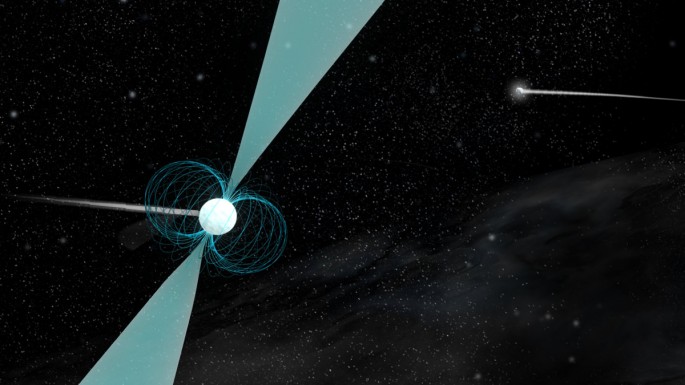Some U.S. high school students have apparently discovered a pulsar which was later revealed by scientists as a one of a kind pulsar that possessed the widest orbit ever seen on a neutron star.
Baltimore and Virginia students have conducted an analysis of data obtained from the National Science Foundation's Green Bank Telescope that aided in the detection of the pulsar PSR J1930-1852 in 2012.
During an initial follow up from the observations of astronomers, there were already siginificant differences in spin frequency and it was confirmed that the pulsar is actually a part of a binary system, which are included in rare double neutron star systems. Normally, pulsars orbit ancient white dwarf stars.
Optical telescope surveys also reveal that this pulsar has no visible companion as scientists conclude that its likely companion is another neutron star in the system. Apart from this discovery of a neutron star companion, studies also reveal that the timing of the pulses of the two neutron stars spans the widest separation that was ever observed in double neutron star systems.
This pulsar possesses an orbital path of 52 million kilometers which is almost equivalent to the distance of Mercury between the Sun. According to lead author Joe Swiggum from the West Virginia University, its orbit is more than twice as large as any previously identified double neutron star system.
He also adds that this pulsar's parameters has provided some valuable insights about how this type of binary system formed where outlier systems such as J1930-1852 can give a better visualization of the myriad possibilities in binary evolution.
Scientists also note that some of these pulsars are so close to their companion that their orbital paths are equal to the diameter of the sun.
Originally, pulsars are remnants of massive stars that have exploded from supernovas. They are now spinning neutron stars that emit electromagnetic radiation of 1,000 pulses per second. As these radiation waves stream through deep space, radio telescopes on Earth can detect these energies.
In 2012, this pulsar was discovered by students Cecilia McGough from the Strasburg High School in Virginia and De'Shang Ray from the Paul Laurence Dunbar High School in Baltimore, Maryland during a Pulsar Search Collaboratory workshop.
This study is published in the Astrophysical Journal.



























